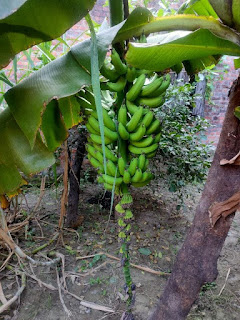
Author:
Anjali DixtiAssistant Professor,Faculty of Juridical Sciences,Rama University, Kanpuranjalidixitlexamicus@gmail.com
INTRODUCTION
The indigenous and ethnic people of the world have learnt to live in most hostile environmental condition in this universe. The most interesting feature associated with these indigenous and ethnic has been found that, they live in localities which are immensely rich in biodiversity. These ethnic and indigenous people have played a vital role in conservation of environmental management and development process as they posse’s traditional knowledge which has been useful in Eco-restoration. It has been noticed that these people know how to live with harmony in nature. In India, 68 million people belonging to 227 ethnic group and comprising of 573 tribal communities derived from six racial stocks namely - Negroid, Proto- Australoid, Mongoloid, Mediterranean, West Breachy and Nordic exists in different part of the country.
These ethnic people mostly the indigenous tribals live close in the vicinity of forests and have managed and conserved the biodiversity of their localities since long time. These tribals take shelter from forest and utilize wild edible plants both raw and cooked. The flower and fruits are generally eaten raw where as tubers, leaves and seeds are cooked. Tribals utilize forest produce, forest timber and fuelwood. These tribals are living in forest since ages and have developed a kind of affinity with forests. India is a country with large ethnic society and has immense wealth due to which it is rich in biodiversity.
PLANTS ARE CONSERVED IN NATURAL HABITAT AND IS BEING WORSHIPPED BY TRIBALS AS HOME OF GOD AND GODDESS.
Many plants are conserved in their natural habitat by tribals due to magico - religious belief that they are habitat of god and goddess. Plants and flowers have a profound influence on them. Tribals worship trees and flowers as they believe that God and Goddesses reside in them.
LIST OF PLANTS WORSHIPED AND CONSERVED BY TRIBALS ON ACCOUNT OF MAGICO - RELIGIOUS BELIEF.
SNo
Local Name
Vernacular Name
Scientific Name
Name of God and Godess residing in plants
1
Aam
Amra
Mangifera indica Linn.
Lord Vidhyadhara
2
Arjun
Arjun
Terminalia arjuna W &A
Lord Brahma
3
Bijapura
Nibu
Citrus medica Linn
Lord Brahaspati
4
Bilva
Bel
Aegle marmelos Corr
Lord Shiva
5
Nimba
Name
Azadirachta indica A. Juss.
Serpent King
6
Basil
Tulsi
Ocium santum L
Goddess Lakshmi
7
Baka
Agasti
Sesbania grandiflora (Linn) pers
Lord Narayan
8
Karavira
Kerabi
Nerium indicum Mill
Lord Ganesh
9
Nilapadma
Kamal
Nelumbi nucifera Gaertn
Godess Ambika
10.
Sweta padma
Madar
Calotropis gigantean (L) R.Br
Lord Shiva
CROP PLANTS CONSERVED BY TRIBALS AS SOURCE OF FOOD
The ethnic and indigenous people have conserved several plants and endangered cultivars of agricultural crops such as rice, maize, millets, grains, legumes, fruits and vegetables which have originated under diverse agro-ecological climates in north -east, central and peninsular region of India, the indigenous communities have their abode, e.g. some of these indigenous cultivars of rice such as Pattambi, Champara, Valsana are conserved by Kurichya, Pariyar, Khasi, Jatin and Garo tribes in North East region - Manipur, Meghalya, Assam and 150 wild cultivars of rice which are conserved by Santhal, Munda, Birhor and Gond tribes of Madhya Pradesh, Chhatisgarh, Orissa, Jharkhand and Bihar. These cultivars are genetically superior than existing cultivated rice varieties in characters like aroma, grain quality, protein content, digestibility and also found resistance to insects, pests and diseases.
DIVERSITY OF PLANTS CONSERVED BY TRIBALS AS WILD FRUITS, SEEDS, BULB, ROOTS AND TUBERS FOR EDIBLE PURPOSE -
The ethnic and indigenous people have to depend upon several wild species for fruits, seeds, bulbs, roots and tubers which are used for edible purposes.
LEGAL PROTECTION OF INDIGENOUS PEOPLE IN INDIA
With the statement “all Indian People are Indigenous” the government chose to not recognize the concept of Indigenous people but in 2007 voted in favor of the UN Declaration on The Rights of Indigenous People (UNDRIP) and signed the ILO convention 107. As per Part IV of the Indian Constitution which, the State is obligatory to put into force the International Treaties Indian Government has signed, the Directive Principle of State Policy also includes taking special care in promoting the educational and economic interest of weaker section specially the Scheduled Tribes and Scheduled Castes. The Indian Constitution also provides for special Land rights and self governance applicable in high density Indigenous people area. The Part III which enshrines the soul of Constitution i.e. The Fundamental Rights provided for the Right to Equality and equal protection before law with no discrimination on the basis of caste, sex, religion, race, place of birth etc. it also provides for making special provisions for the advancement of any socially or educationally backward class which includes Scheduled Tribes and to abolish Untouchability. India has signed various International treaties on various subject matter which have rights of Indigenous people at stake, still every time a law is made or a committee is set up the end result and its implementation is like a blue moon, which can be seen rarely. Some examples to put in perspective are the scheduled castes and scheduled tribes (prevention of atrocities) act, 1989 now amended lacks to safeguard the people and still the crime against SC, STs are on the rise year by year. India has been drafting the National Forest Policy since 2018 when the Indigenous People protests were on the rise but there is no government backing and again the Tribal are neglected, as for now the 1988 version of the policy is in place which is very basic and talks about conversion not strict actions. A positive step which was taken by one of the seven north east states who are densely populated with Indigenous people was approving the “Assam Land Policy- 2019” under which addressed various issues confronted by the Tribes and was based upon a committee which was set up to do so also under the policy there was no concrete definition written for Indigenous People but were said to be identified , but again the National Registrar of Citizen (NRC) supposedly not include 100,000 tribals who were the original inhabitants of Assam. Under the Forest Rights Act no member belonging to the tribes who are considered to be forest dwellers are to be evicted from land until all the necessary procedure and verification is complete but again this is in pen and paper and Tribes even after getting rights or have application pending are always under threat as to when they will be thieved of their land as big organizations come in and get necessary permit to start working which they have no authority to stop.
Rights Available TO INDIGENOUS PEOPLE IN INDIA AS PER LAW
Article 23 prohibits the system of bonded labor.
Article 24 prohibits employment of children below the age of 14 years in factories and hazardous places.
Article 29 provides for communities the right to safeguard their distinct language, script and culture, even if it’s a minority community.
Article 46 provides for promotion of weaker section of society by promoting educational economic interest, especially uplifting Scheduled Tribes and Scheduled Castes.
Article 164(1) gives states the authority to establish special ministry for scheduled tribes and scheduled castes.
Article 243, 330 and 334 tells us the guidelines for reservation of seats for Schedule Tribes and Schedule Caste in House of People and Panchayats.
Article 244 deals with administration of Tribal Areas.
Article 244-A empowers the parliament to form an autonomous state comprising of tribal areas in Assam, also gives the authority to create local legislature or council of ministers. But the administration would be according to sixth schedule and autonomy in making of districts and regions.
Article 275 empowers the parliament to make grants and provide it to state for the welfare and upliftment of Scheduled Tribes and to better the administration of Scheduled Castes.
The Fifth and Sixth schedule gives the provision relating to administration and control of the scheduled and tribal area in all states except Assam, Tripura and Mizoram which are contained in Fifth schedule.
Various Acts in Place
The Untouchability (Offences) Act, 1995 prescribes for the punishment of practice of untochability and any disability arising thereof.
The Scheduled Tribes and Scheduled Castes (Prevention of Atrocities) Act, 1985 protects the tribal people from various discrimination faced from influential of the society and to also eradicate thee inhumane torture to Indigenous people.
The Scheduled Tribes Bonded Labor Abolition Act, 1976 to protect tribal people from exploitation by the boss as they provide minimum to no wage to the schedule tribes for all the hard work they do.
The Forest Conservation Act, 1980 provides that the use of forest land for industrial purpose is prohibitory if tribal are already inhibited and have the authority on the land as forest is home to Indigenous people.
CONCLUSION
There is a urgent need to explore valuable germplasm through periodical survey and evaluate the floral diversity which has been conserved in the local eco -system. The ecological imbalances caused in several years needs to be restored by conserving biological diversity by adopting in-situ conservation of genetic resources within their eco-system and ex-situ conservation of genetic material can be made in seed bank, botanical garden herbal garden, arborateum and conservation of ex-plants or organs in in-vitro as cryo-bank, genomic DNA, DNA library and DNA bank. Ethnobiologist thus has to salvage the valuable legacies before tribals culturedisappear and gives birth to another culture. India in the present scenario is rich in biodiversity.The indigenous people have helped in conservation of bio-diversity. However, efforts for conservation have to be made in both vertical as well as hortizontal direction due to rapid industrial revolution. Conservation of diversity, sustainable manaement, propogation of such valued flora and their in-situ as well as ex-situ conservation are the need of this century. Therefore various disciplines like Genetics, Pollen biology, Tree Breeding, Ecology, Botany, Physiology, Eco - restoration, Taxonomy, Ethno -botany, Taxonomy, Phyto chemistry, Biometrics, Bio-stat should work at one platform and linkages have to be established. In sacred forests as well as in localities dominated by ethnic people needs to be surved for identification of plants associated with various ethno-botanical uses followed by phytochemical studies. Awarenes campaigns and training programmes are to be organized in tribal localities for eco -restoration and conserving floras.
REFERENCES
[1] ‘Indigenous World 2020: India’ < https://www.iwgia.org/en/india/3601-iw-2020-india.html> accessed 10 Jan, 2022
[2] ‘Indigenous People, Indigenous Voices’
< https://www.un.org/esa/socdev/unpfii/documents/5session_factsheet1.pdf> accessed 10 Jan, 2022
[3]‘The Rights of Indigenous Peoples’ <http://hrlibrary.umn.edu/edumat/studyguides/indigenous.html> accessed accessed 10 Jan, 2022
[4] ‘Observations on the State of Indigenous Human Rights in India’<https://www.culturalsurvival.org/sites/default/files/INDIAUPR2016final.pdf> accessed 10 Jan, 2022
[5] ‘Indigenous people in India and the web of indifference’ <https://www.downtoearth.org.in/coverage/governance/indigenous-people-in-india-and-the-web of-indifference-55223> accessed 10 Jan, 2022
[6] ‘Indigenous People at United Nations’ <https://www.un.org/development/desa/indigenouspeoples/about-us.html> accessed 15 Jan, 2022
[7] ‘India’s support for UN Declaration on the Rights of Indigenous Peoples’ <https://indiantribalheritage.org/?page_id=259> accessed 16 Jan, 2022
[8] ‘The Role of ethnic and Indigenous people of India and their culture in the conservation of biodiversity’ <http://www.fao.org/3/xii/0186-a1.htm > accessed 16 Jan, 2022
[9] ‘Rights of Indigenous People’ <https://www.slideshare.net/nsrkbharat/rights-of-indigenous-people> accessed 16 Jan, 2022
[10] ‘Indigenous Peoples in India’<https://www.iwgia.org/en/india.htm> accessed 16 Jan, 2022





























No comments:
Post a Comment
आप के विचार!